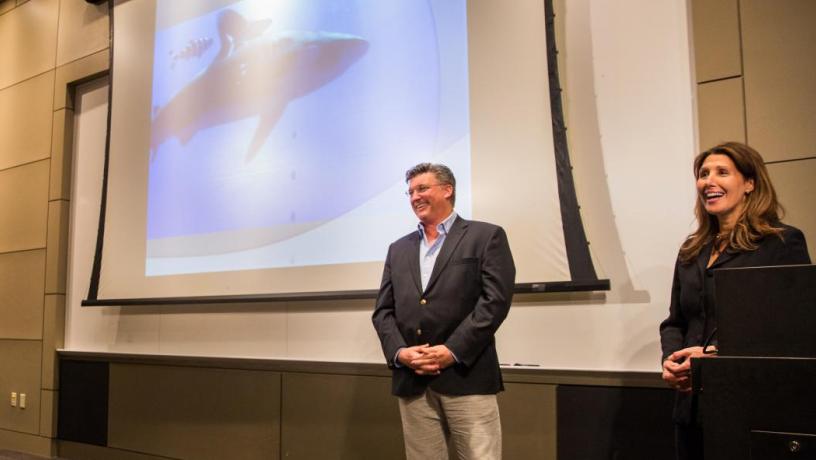Extreme Engineering: Exploring the Ocean Deep
As distant as Mars and Venus are, we earthlings actually possess a much clearer picture of their surfaces than we do of much of our own ocean floor. Buried beneath trillions of tons of saltwater, these remote depths are barely accessible to satellite imagery, meaning that anyone trying to locate sunken vessels or volcanic vents must send robotic submersibles far down to capture an up-close view.

Veteran explorers Tim Taylor and Christine Dennison recently spoke on campus as part of Columbia Engineering's Extreme Engineering series. Evolving technology is essential for discovery, they said—and for getting back alive.
“Exploring the oceans is an engineering issue,” said Tim Taylor, president of RV Tiburon, Inc., a company that mounts underwater research expeditions, at a special talk on November 30 in Columbia’s Extreme Engineering lecture series. He appeared with his wife Christine Dennison, also a veteran explorer, at the invitation of Mike Massimino, professor of professional practice in mechanical engineering and a former NASA astronaut, who introduced them as “some of the coolest people I’ve ever met.”
Taylor’s worldwide explorations include studying sharks in the wild, discovering new coral reefs, and locating lost submarines from World War II, while Dennison is a seasoned diver and expedition leader who has swum with piranhas in the Amazon and delved deep beneath the Arctic ice caps. Evolving technology is essential for discovery, they attested—and for getting back alive.
“Explorers depend on engineering, and our gear is our lifeline,” said Dennison, who recounted once relying on a solar backpack when conventional batteries failed at frigid temperatures near the North Pole. “We have to be very self-sufficient in the field, so we look for the best gear and are always seeking new solutions for things that can go wrong.”
Over just the past five years, technological leaps and bounds have vastly accelerated the pace of ocean exploration, they said, as ever smaller submersibles incorporate better batteries, more powerful sensors, and machine learning. Thanks to technology that adjusts for the toxic levels of oxygen our lungs begin to absorb under high pressures, humans have figured out how to descend hundreds of feet below the ocean’s surface—yet there still exists a certain point beyond which the human body simply can’t withstand the pressure.
The rise of autonomous robots capable of transmitting data from extreme depths will help reveal much more of the seabed over the next few decades, the explorers predicted, with more prevalent drone-like craft “democratizing the oceans” and empowering citizens to monitor and protect the high (and low) seas.
“This is a golden age for ocean exploration,” Taylor said.
